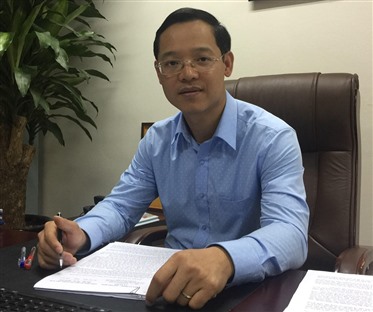 Opinion
Opinion

Trương Anh Dũng, deputy director general of the Directorate of Vocational Education under the Ministry of Labour, Invalids and Social Affairs, talks to Tuổi trẻ (Youth) newspaper on the need for co-operation between the Ministry of Education and Training (MOET) and the Ministry of Labour, Invalids and Social Affairs (MOLISA) in education and job training
 |
| Trương Anh Dũng, deputy director general of the Directorate of Vocational Education |
Trương Anh Dũng, deputy director general of the Directorate of Vocational Education under the Ministry of Labour, Invalids and Social Affairs talks to Tuổi trẻ (Youth) newspaper on the need for co-operation between the Ministry of Education and Training (MOET) and the Ministry of Labour, Invalids and Social Affairs (MOLISA) in education and job training
Do you know why there is a still a gap in educational management between the MOET and the MOLISA?
In 2017, all colleges and vocational schools nationwide – which were under the management of the MOET – were returned to the MOLISA. At first, we faced certain challenges. However, by late 2017 and early 2018, things had gradually returned to normal, despite the fact that occupational and vocational schools still face certain operational challenges.
Before 2017, MOET and MOLISA were two separate Government agencies with two different functions. So it will take time to iron out their differences and achieve their common objectives in training a high-quality workforce for the country.
During the recruitment of students in late 2017 and early 2018, some progress was recorded. But some secondary vocational schools and colleges faced challenges, particularly in student recruitment and occupational orientation.
What solutions have the two agencies found to reconcile their different functions?
In the long run, we should focus more on renewing current curricula providing job orientation for high school students. In the past, when students registered for vocational school, they would be given bonus points. This was a driving force for students who were not really good in academics.
In my opinion, the MOET should invest in upgrading vocational training institutions, particularly the laboratories and laboratory staff. We should encourage vocational training establishments to join hand with the MOET in offering training courses for their students.
We also suggest that the MOET ask colleges to organise the national high school graduation exam. This examination is very important to Vietnamese people, but only universities have been involved in its preparation and organisation, while vocational colleges are standing outside.
Participating in the exam would be a good opportunity for these colleges to approach high schools and nurture the pupils’ post-school careers.
Việt Nam’s target is to have 30 per cent of secondary school graduates continue on to high school and 40 per cent continue to college by 2020. However, the number of secondary school graduates who go to college is just 10 per cent. Unless changes are made, we will fail to hit our goals.
In your opinion, what is preventing secondary students from learning occupational skills?
To attract students to vocational schools, we must improve teaching quality. The MOET has already initiated a plan to re-arrange these schools and has vowed to close any underperforming school and reinvest their funds in refurbishing technical facilities. I am confident that these measures will lead to positive changes very soon.
What will the MOLISA do to bring more students to vocational secondary schools in 2019?
We have vowed to improve the quality of learning and teaching in all vocational schools. To achieve this objective, the MOLISA has already completed output criteria for 129 occupations in the vocational school system nationwide for the 2019 school year. In the era of Industry 4.0, we will try to include new skill training courses and add advanced courses for those who already have employment experience. We will also organise training courses for workers who have recently lost their jobs so that they can find work.
Will you please elaborate on the co-operation between the two agencies in sharing database of student enrolment in universities, colleges and vocational schools?
Under Resolution 29 of the Party Central Committee, one unified application will be used for universities, colleges and vocational schools nationwide starting in 2019.
The application form for vocational schools currently differs from that for universities and colleges.
From 2019 onwards, the same tests will be used for students applying to universities, colleges or vocational schools. –VNS


.jpg)

